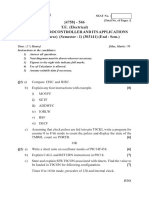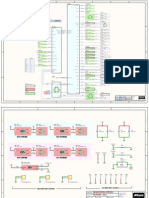0% found this document useful (0 votes)
128 views62 pagesVerilog
Verilog HDL is a hardware description language used to describe digital circuits. There are two main styles for describing circuits in Verilog - structural and behavioral. Structural style uses logic gates and wire connections, while behavioral style uses procedural assignments and Boolean equations to specify circuit behavior. Verilog supports various data types, modules with ports, primitive logic gates, continuous assignments, and operators to concisely model digital designs at different levels of abstraction.
Uploaded by
Akbar FacefactorCopyright
© Attribution Non-Commercial (BY-NC)
We take content rights seriously. If you suspect this is your content, claim it here.
Available Formats
Download as PDF, TXT or read online on Scribd
0% found this document useful (0 votes)
128 views62 pagesVerilog
Verilog HDL is a hardware description language used to describe digital circuits. There are two main styles for describing circuits in Verilog - structural and behavioral. Structural style uses logic gates and wire connections, while behavioral style uses procedural assignments and Boolean equations to specify circuit behavior. Verilog supports various data types, modules with ports, primitive logic gates, continuous assignments, and operators to concisely model digital designs at different levels of abstraction.
Uploaded by
Akbar FacefactorCopyright
© Attribution Non-Commercial (BY-NC)
We take content rights seriously. If you suspect this is your content, claim it here.
Available Formats
Download as PDF, TXT or read online on Scribd
/ 62





















































































